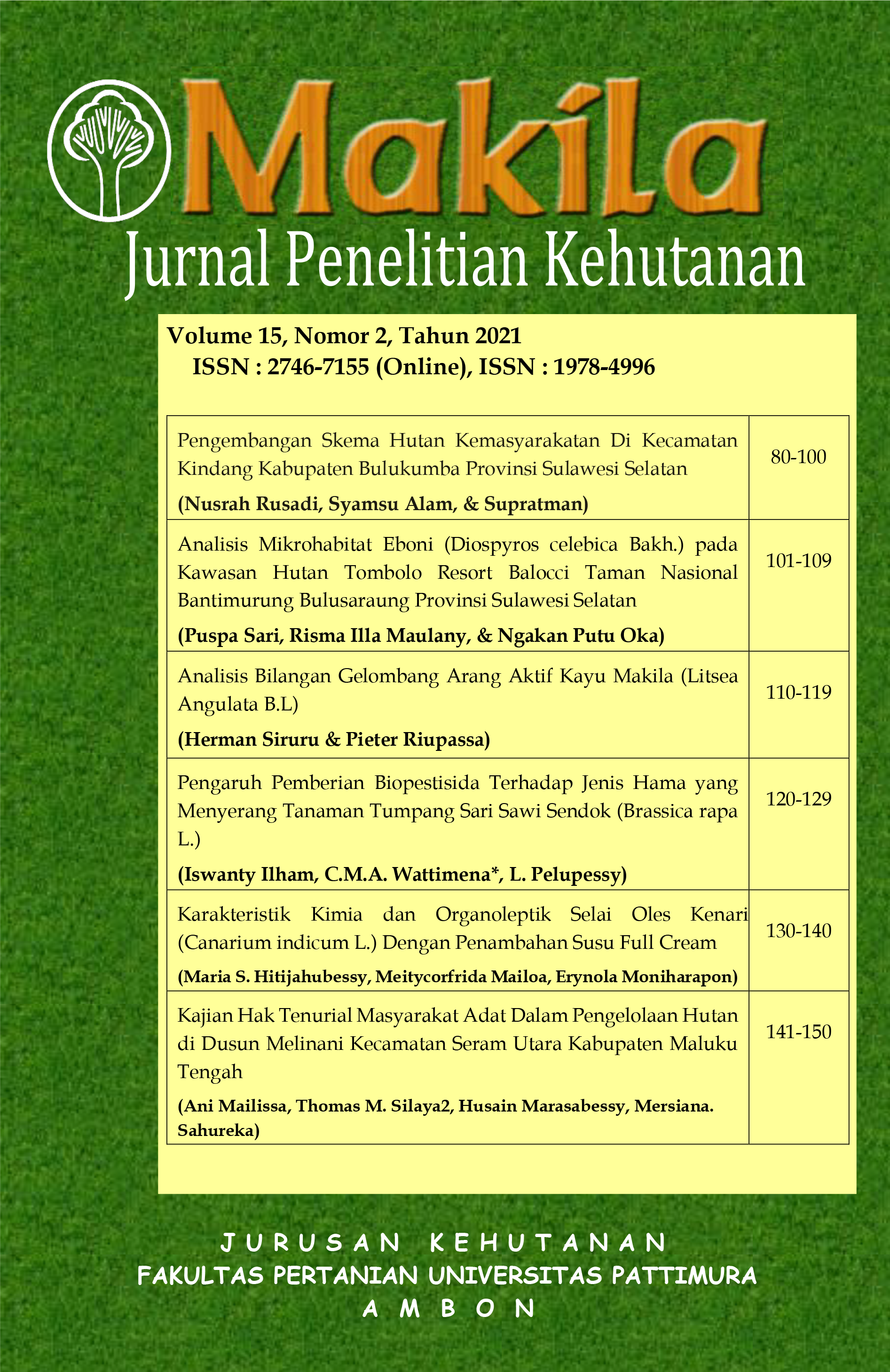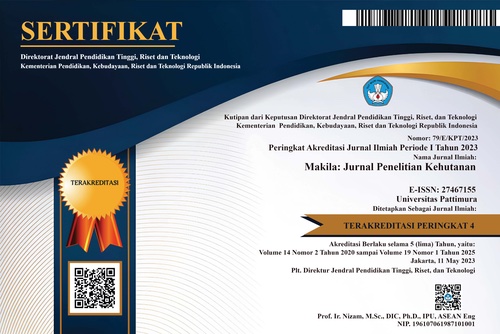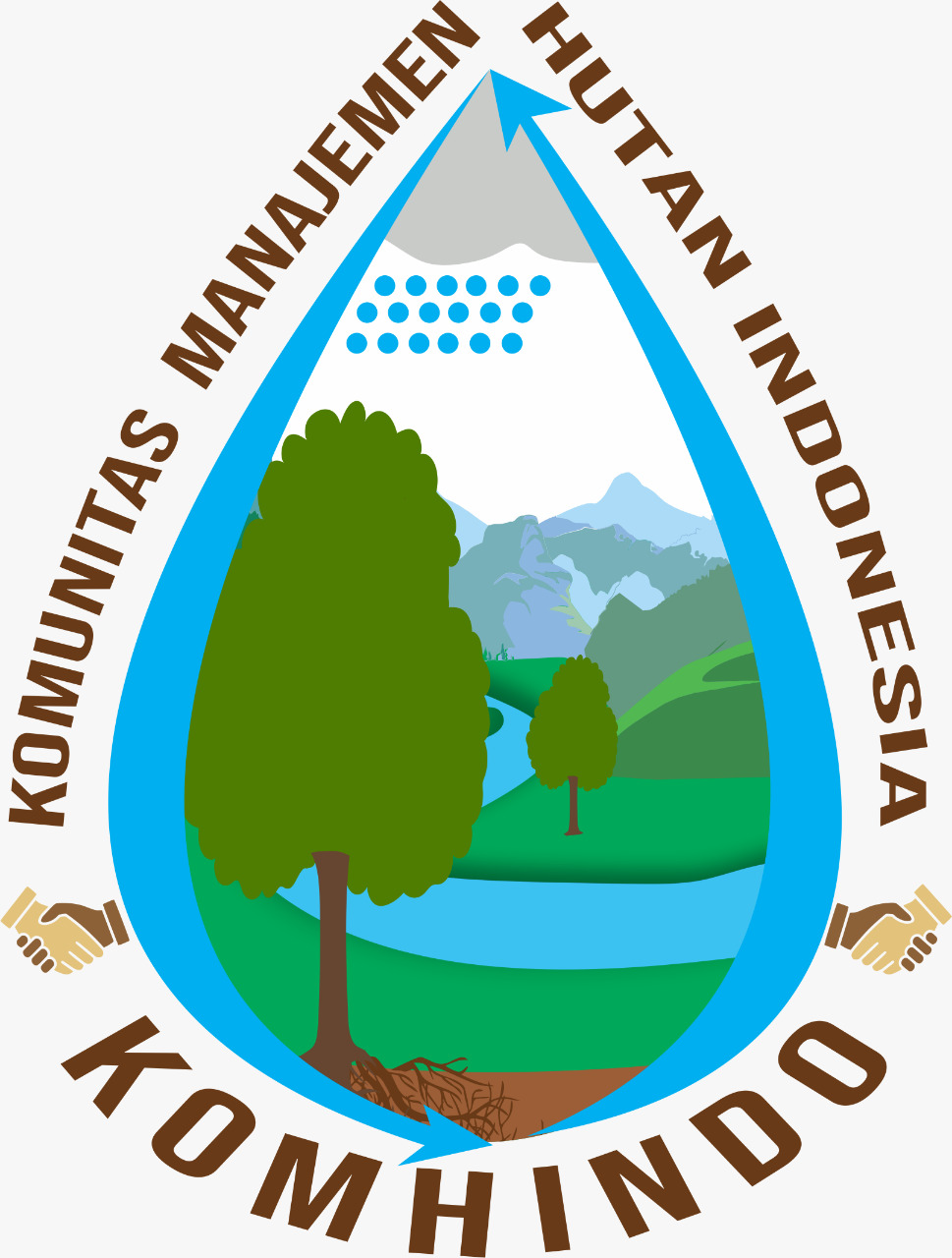Analisis Bilangan Gelombang Arang Aktif Kayu Makila (Litsea angulata B.L)
Abstract
Infrared (IR) spectroscopic analysis systems provide advantages in characterizing organic compounds and polymeric material formulations. In this study, an FTIR analysis of makila wood-activated charcoal (Litsea Angulata B.L) was conducted to determine the relationship between wavenumber and the type of makila activated charcoal and the correlation of wavenumber with the quality of makila wood activated charcoal. Makila wood-activated charcoal is made in 2 stages: carbonization at a temperature of 500 ºC for 8 minutes and then starting at a temperature of 700 ºC for 60 minutes. The results of the independence test (14.722) showed that at the α=0.05 level (24.992), the wavenumber was not related to activated charcoal. The correlation between wavenumber and iodine adsorption capacity is negative and tends to be below; in the area of wave number 400-1500 cm-1, it is -0.5476, and in the area of wave number 1500-2000 cm-1 is -0.3931. While in the wavenumber region, 2500-4000 cm-1 is positive and tends to be low at 0.3660, and in the wavenumber region 2000-2500 cm-1, the value is zero (0) or there is no correlation. The correlation between wavenumber and benzene absorption is positive and tends to below, in the area of wave number 400-1500 cm-1, it is 0.1902, and in the region of wave number 1500-2000 cm-1 is 0.3271. While in the wavenumber region 2500-4000 cm-1, the correlation is negative and tends to be high at -0.8310, and in the wavenumber region 2000-2500 cm-1, the value is zero (0) or there is no correlation.
Downloads
Copyright (c) 2021 Herman - Siruru, Pieter Riupassa

This work is licensed under a Creative Commons Attribution 4.0 International License.











